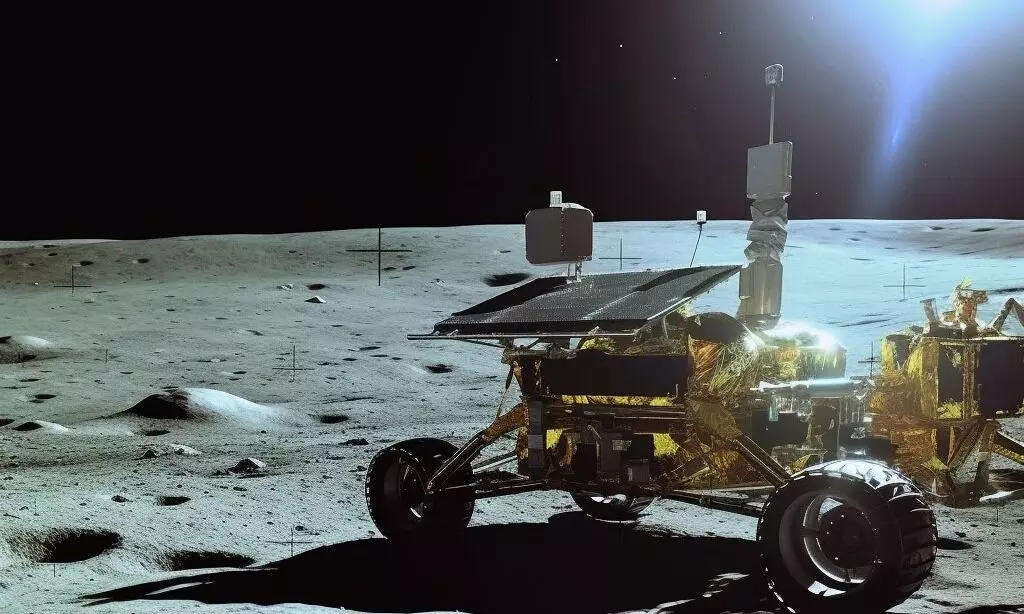Chandrayaan-3’s rover Pragyan ready to explore moon, collect crucial data
The Indian Space Research Organisation (ISRO) announced with pride that the rover had ‘ramped down’ from the lander, marking India’s footsteps on the moon.
By Anoushka Caroline Williams
Hyderabad: India’s Chandrayaan-3 mission has achieved a momentous milestone by successfully landing a rover on the lunar surface. Just one day after creating history as the first country to land on the moon’s south pole, Chandrayaan-3’s rover, named Pragyan, embarked on its lunar exploration journey.
The Indian Space Research Organisation (ISRO) announced with pride that the rover had ‘ramped down’ from the lander, marking India’s footsteps on the moon.
Joining the elite club of lunar explorers
With this successful mission, India has cemented its place in the exclusive club of nations that have achieved soft landings on the moon, a feat previously accomplished by the United States, the former Soviet Union, and China. It is a significant advancement in India’s space exploration endeavours.
Pragyan’s mission on the moon
Weighing in at 26 kg, Pragyan was safely tucked within the Vikram lander’s belly for its lunar journey. After the dust settled from the landing, panels on the Vikram lander opened, revealing a ramp that allowed Pragyan to gracefully descend to the lunar surface.
Pragyan is now on a mission to explore the moon’s rocky terrain, craters, and more. It carries two scientific instruments designed to analyse the lunar surface’s mineral composition and the chemical makeup of its soil.
Interplanetary communication
Pragyan’s communication is exclusively linked to the lander, which, in turn, transmits data to the Chandrayaan-2, which is in orbit around the moon. From there, the information is relayed back to Earth for in-depth analysis.
The lunar day and night cycle
The landing coincided with the beginning of a lunar day, which, in moon time, lasts a little over four weeks on Earth. This means that the lander and rover will have approximately 14 days of continuous sunlight to recharge their batteries. However, once lunar night falls, they will discharge and cease operation. It remains uncertain whether they will reawaken with the next lunar day.
Scientific objectives: water and more
Among Chandrayaan-3’s primary objectives is the quest for water on the moon. Scientists believe that the permanently shadowed craters in the lunar south pole region may harbour ice, a resource critical for potential future lunar habitation and as propellant for spacecraft headed to destinations like Mars.
A triumph amid challenges
The success of Chandrayaan-3 is a remarkable achievement, especially considering the moon’s rugged and challenging terrain. The lunar south pole region is characterised by uneven surfaces, craters, and boulders, making a soft landing particularly intricate.
India’s lunar ambitions continue
Chandrayaan-3’s accomplishment builds on India’s strong commitment to lunar exploration. The Chandrayaan-2 orbiter, which survived a challenging 2019 mission that saw the loss of its lander and rover, remains in operation and continues to relay valuable data and images from the moon.
A global lunar renaissance
India is not alone in its lunar aspirations. The global interest in the moon is growing, with numerous missions from various countries planned for the near future. Scientists emphasise that much remains to be learned about the moon, often referred to as a gateway to deep space.
Chandrayaan-3’s successful landing and Pragyan’s inaugural lunar exploration is a significant leap forward in India’s space exploration capabilities. This achievement opens doors to further scientific discoveries and reaffirms India’s commitment to pushing the boundaries of space exploration. As global interest in lunar exploration continues to surge, the moon’s mysteries are becoming an increasingly important focus for humanity’s exploration endeavours.